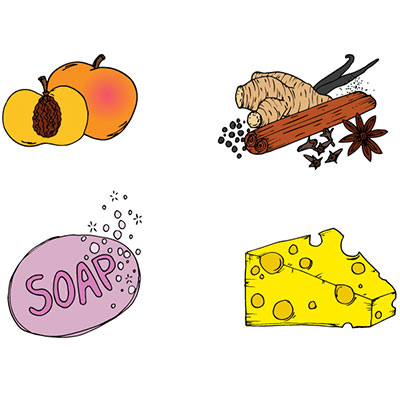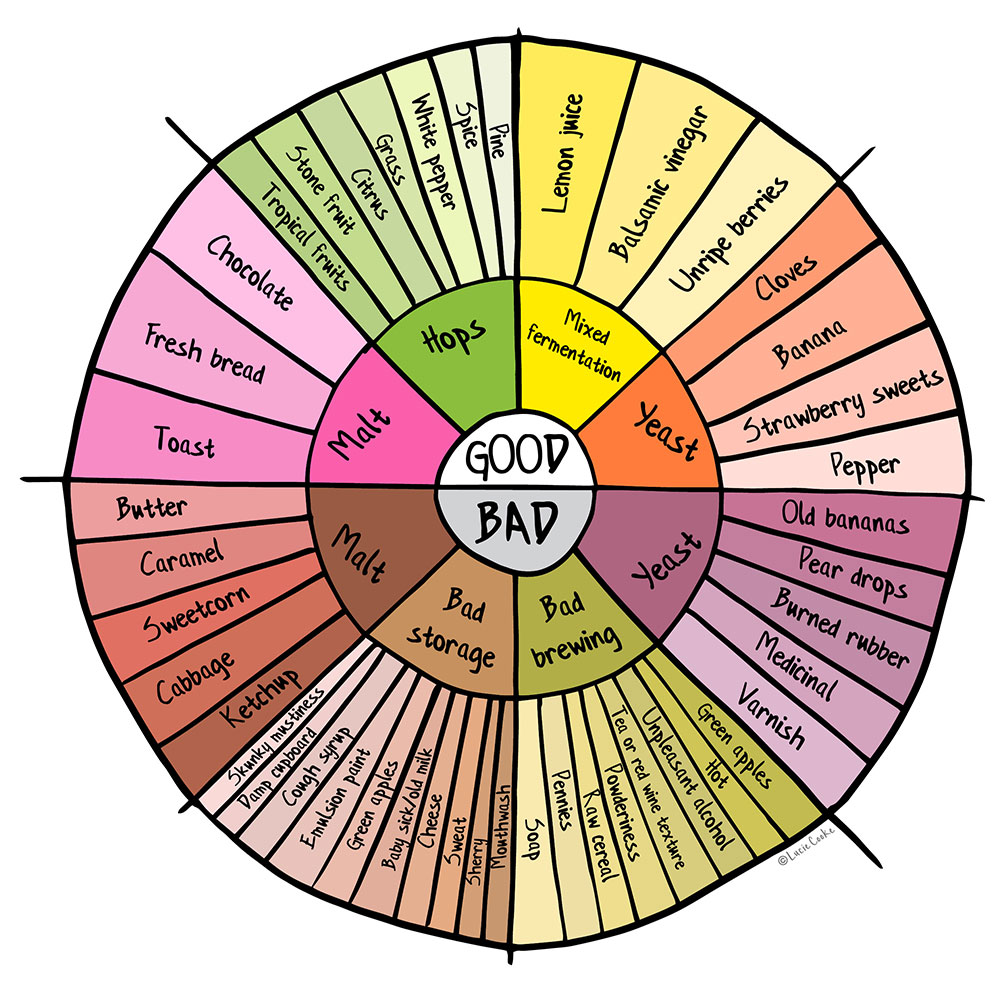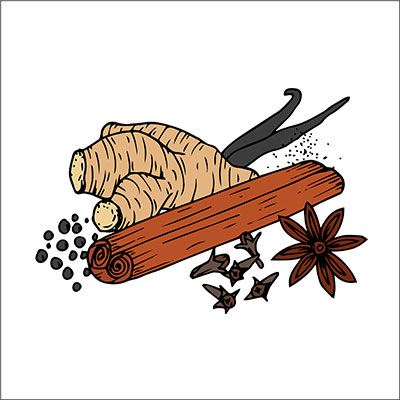Learn & Discover
Learn & Discover
Introduction to Beer Faults
Your guide to identifying off flavours in beer and how to return or exchange it
There’s nothing like the experience of drinking beer in a pub or taproom. It’s the original setting for enjoying beer and it’s hard to beat. Sometimes, faults can develop within the beer, somewhere along the journey that takes it from brewery to glass. If you’re new to beer, or lack experience talking about how you distinguish between the flavours you prefer and those you don’t, this guide will help you identify good and off-flavours in beer. If you do experience faulty beer Katie Mather provides advice on how to return or exchange it. Illustrations by Lucie Cooke
Introduction to Beer Faults
Your guide to identifying off flavours in beer and how to handle it at the bar
There’s nothing like the experience of drinking beer in a pub or taproom. It’s the original setting for enjoying beer and it’s hard to beat. Sometimes, faults can develop within the beer, somewhere along the journey that takes it from brewery to glass. Read more...
Katie Mather
A beer blogger-turned-food and drink writer. Co-owner of Corto. Loves pubs.
One of the first things you should know about tasting beer is how to tell if it’s bad. But what is bad when it comes to beer? How can we tell if a beer is off, or if it was meant to taste that way?
There are many, many ways your pint could turn out wrong. It’s all down to what’s known in the beer world as faults or “flaws”. “Flaws” are unpleasant sights, smells and tastes that just shouldn’t be in your glass, and unfortunately, every beer has the ability to be ruined by one or two of them!
Faulty flavours and off aromas
There are a lot of different flavours and aromas that beer drinkers find pleasant in some styles of beer, but are obvious faults in others.
To make it easier to learn more about these flavours and aromas, take a look at this flavour wheel (click to it enlarge it). How many of the associated tastes and fragrances have you recognised before?
Remember: the style of the beer matters when you’re looking at its flavour and aroma. We’ll look at this in a bit more detail later.
Faulty flavours and off aromas
One of the first things to know about tasting beer is how to tell if it’s bad. But what is bad when it comes to beer? How can we tell if a beer is off, or if it was meant to taste that way?
There are many, many ways your pint could turn out wrong. It’s all down to what’s known in the beer world as “flaws”. “Flaws” are unpleasant sights, smells and tastes that just shouldn’t be in your glass, and unfortunately, every beer has the ability to be ruined by one or two of them!
There are a lot of different flavours and aromas that beer drinkers find pleasant in some styles of beer, but are obvious faults in others.
To make it easier to learn more about these flavours and aromas, take a look at this flavour wheel. How many of the associated tastes and fragrances have you recognised before?
Remember: the style of the beer matters when you’re looking at its flavour and aroma. We’ll look at this in a bit more detail later.

Good smells:
Malt: toast, fresh bread, chocolate
Hops: white pepper, spice, pine, grass, citrus, stone fruits, tropical fruits
Yeast: cloves, banana, strawberry sweets, pepper
Mixed Fermentation: lemon juice, balsamic vinegar, unripe berries, farmyard
Off smells:
Malt: butter, caramel, sweetcorn, cabbage, ketchup (or thousand island dressing)
Yeast: old bananas, pear drops, burned rubber, medicinal — from bleach to cough drops, varnish
Bad Storage: skunky-mustiness, damp cardboard, cough syrup, emulsion paint, green apples, baby sick or old milk, cheese, sweat, mouthwash, sherry
Bad Brewing: green apples, hot, unpleasant alcohol, tea or red wine texture, powderiness, raw cereal, pennies, soap.
Good smells:
Malt: toast, fresh bread, chocolate
Hops: white pepper, spice, pine, grass, citrus, stone fruits, tropical fruits
Yeast: cloves, banana, strawberry sweets, pepper
Mixed Fermentation: lemon juice, balsamic vinegar, unripe berries, farmyard
Off smells:
Malt: butter, caramel, sweetcorn, cabbage, ketchup (or thousand island dressing)
Yeast: old bananas, pear drops, burned rubber, medicinal — from bleach to cough drops, varnish
Bad Storage: skunky-mustiness, damp cardboard, cough syrup, emulsion paint, green apples, baby sick or old milk, cheese, sweat, mouthwash, sherry
Bad Brewing: green apples, hot, unpleasant alcohol, tea or red wine texture, powderiness, raw cereal, pennies, soap.
Looking at these groups of flavours, you can see how they overlap. Some “good” flavours can tip over into “bad”, and in some styles of beer a flavour or aroma that would normally be considered a fault actually becomes part of that beer’s character.
It’s all part of the fun of being a beer drinker! There are rules, but there is also the question of personal preference. Some people love the foamy banana aromas of a weissbeer, some people don’t like it at all. A lot of it is down to what you feel is right.
Thinking about what you’re drinking
One of the most important skills you’ll learn when you’re tasting a beer is understanding what the different flavours and aromas mean all together. This is how you decipher the different styles of beer by taste and smell alone, and this is also how you can build your beer tasting confidence.
When you first get your beer from the bar, take a good look at it. Has it got a foamy head? Or is it flat and oily? Does your beer have lively streams of bubbles from the bottom to the top of the glass? Is it clear or is it hazy?
Looking at these groups of flavours, you can see how they overlap. Some “good” flavours can tip over into “bad”, and in some styles of beer a flavour or aroma that would normally be considered a fault actually becomes part of that beer’s character.
It’s all part of the fun of being a beer drinker! There are rules, but there is also the question of personal preference. Some people love the foamy banana aromas of a weissbeer, some people don’t like it at all. A lot of it is down to what you feel is right.
All of these things are the start of your beer style detective work, and they’ll also help you confirm whether your beer is faulty or not. (Top tip: Your beer should never look oily! That’s a fault!)
When you drink your beer, remember to give it a sniff. Thinking about how it smells in more specific terms than you’re used to is how you become a more skilled beer drinker.
It all comes down to practice. What seems impossible now — being able to confidently tell if your beer is faulty — will eventually become second nature. Like any skill, the more you try it out, the better at it you’ll become.
How to return a faulty beer
If you’ve never taken a faulty beer back to the bar before, it can seem a little daunting, especially if you feel like you don’t want to draw attention to yourself.
It’s really important to say then, that brewers, publicans and beer servers want to know about the quality of their beer. If you take your beer back and name the fault, they will be able to tell the brewer, fix their beer serving equipment or sort out any issues and make the beer they serve even better for future customers.
Thinking About What You’re Drinking
One of the most important skills you’ll learn when you’re tasting a beer is understanding what the different flavours and aromas mean all together. This is how you decipher the different styles of beer by taste and smell alone, and this is also how you can build your beer tasting confidence.
When you first get your beer from the bar, take a good look at it. Has it got a foamy head? Or is it flat and oily? Does your beer have lively streams of bubbles from the bottom to the top of the glass? Is it clear or is it hazy?
All of these things are the start of your beer style detective work, and they’ll also help you confirm whether your beer is faulty or not. (Top tip: Your beer should never look oily! That’s a fault!)
When you drink your beer, remember to give it a sniff. Thinking about how it smells in more specific terms than you’re used to is how you become a more skilled beer drinker.
It all comes down to practice. What seems impossible now — being able to confidently tell if your beer is faulty — will eventually become second nature. Like any skill, the more you try it out, the better at it you’ll become.
How to return or exchange your beer
If you’ve never taken a faulty beer back to the bar before, it can seem a little daunting, especially if you feel like you don’t want to draw attention to yourself.
It’s really important to say then, that brewers, publicans and beer servers want to know about the quality of their beer. If you take your beer back and name the fault, they will be able to tell the brewer, fix their beer serving equipment or sort out any issues and make the beer they serve even better for future customers.

To help you build your confidence, here are five tips to help you tell a member of bar staff that you think your beer is off.
1. Be specific!
If you can, try to be as specific as possible to show that you really are finding a fault and not complaining because you just don’t like the beer.
2. Be polite
Even if your beer tastes like a muddy puddle, there’s no need to be rude. There are many reasons your beer could have become faulty and it may not necessarily be the member of bar staff’s responsibility or level of training to understand that beer can be bad. Be understanding but also don’t feel like you can’t make a complaint.

3. Offer a solution
Ask for a simple swap with another like-for-like beer — this is the easiest solution and the one most likely to keep the publican happy.
4. Don’t back down
It’s so tempting to apologise and back down if you’re told there’s nothing wrong with your beer. If you really don’t want to drink it — and you shouldn’t, if it’s faulty — just ask them to pour it away and ask for a glass of water or offer to pay for another drink. Being sure of yourself will help build your confidence but it will also prove to less scrupulous/more cynical bar staff that you’re not trying to get a free pint out of the situation.
5. Don’t feel bad if you get knocked back
It happens. Sadly, sometimes pub owners just don’t care that their beer might not be in peak condition. If you aren’t listened to or you are made to feel uncomfortable for asking about a faulty beer, vote with your feet. There are plenty more pubs in the country who truly care about serving delicious, well made, well served beer.
To help you build your confidence, here are a few ways you can tell a member of bar staff that you think your beer is off.
1. Be specific!
If you can, try to be as specific as possible to show that you really are finding a fault and not complaining because you just don’t like the beer.
2. Be polite
Even if your beer tastes like a muddy puddle, there’s no need to be rude. There are many reasons your beer could have become faulty and it may not necessarily be the member of bar staff’s responsibility or level of training to understand that beer can be bad. Be understanding, but also don’t feel like you can’t make a complaint.
3. Offer a solution
Ask for a simple swap with another like-for-like beer — this is the easiest solution and the one most likely to keep the publican happy.
4. Don’t back down
It’s so tempting to apologise and back down if you’re told there’s nothing wrong with your beer. If you really don’t want to drink it — and you shouldn’t, if it’s faulty — just ask them to pour it away and ask for a glass of water or offer to pay for another drink. Being sure of yourself will help build your confidence but it will also prove to less scrupulous/more cynical bar staff that you’re not trying to get a free pint out of the situation.
5. Don’t feel bad if you get knocked back
It happens. Sadly, sometimes pub owners just don’t care that their beer might not be in peak condition. If you aren’t listened to or you are made to feel uncomfortable for asking about a faulty beer, vote with your feet. There are plenty more pubs in the country who truly care about serving delicious, well made, well served beer.










